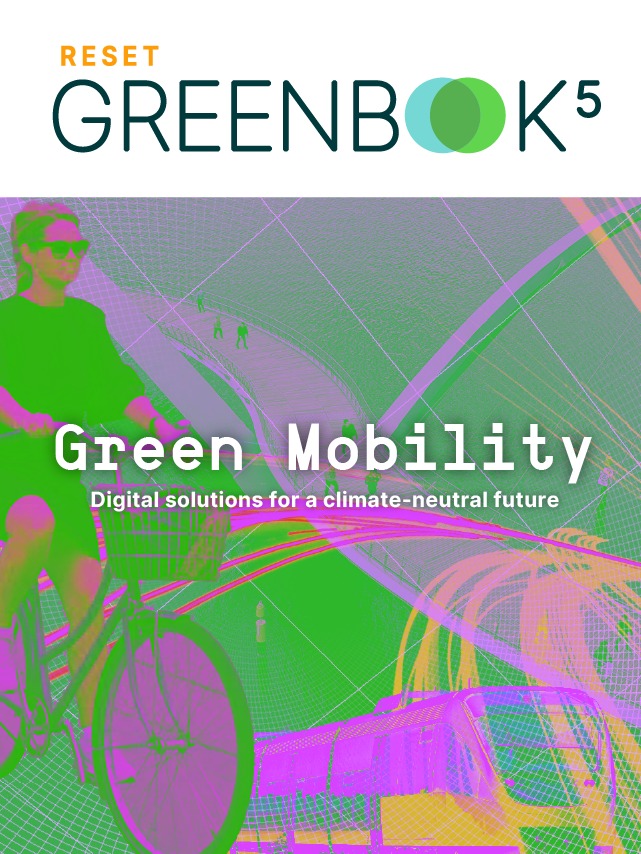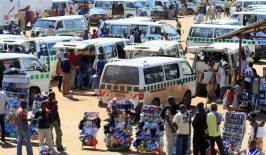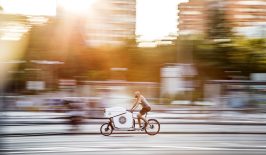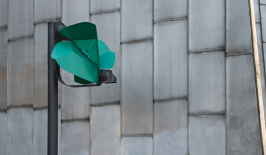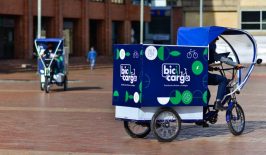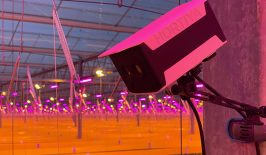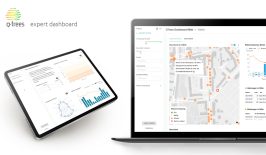Simulations have always been an important part of urban mobility. Simulations help traffic lights “know” when to turn green, where important traffic signs need to be placed and how to organise our roads as a whole.
But, could simulations be used to reduce traffic carbon emissions? Why not.
Requirements for our roads are changing. Whereas development used to focus on how to ease traffic caused by an ever-increasing number of cars on the road, more and more urban planners are realising that the sustainability of our roads has long been unaddressed.
Traffic congestion increases fuel consumption, and with it carbon dioxide emissions that poison our lungs and planet. The worse the traffic, the longer the exposure time and the more irreversible damage is done. Still, the number of cars on our roads is increasing. In 2021, the number of EU-registered passenger cars reached 253 million, an increase of 8.6 percent from 2016. With more cars, we can only expect traffic congestion to increase, further exacerbating the problem of greenhouse gas emissions and pollution in our streets.
And, as we know, we are already on extremely thin ice. Europe (and the world as a whole) still has a long way to go before we are even close to being on course to reaching our goal of becoming carbon neutral by 2050.
So, how can digitisation make for more sustainable traffic planning — and is this even the right approach for reducing emissions? Studies do show that “CO2 emissions can be lowered by improving traffic operations, specifically through the reduction of traffic congestion”. Here, we dive into a few projects hoping to make our streets smarter — but will they make them greener?
European C-Roads: Connecting automation with efficiency
This joint initiative of European Member States and road operators is developing a network of so-called Smart Roads. The main benefits concern driving safety. However, the collection and use of big data allows for more efficient road travel, which has a number of overall benefits. For example,
“By adjusting route and speed based on accidents, roadworks [and] weather conditions, it’s possible to make the most of the road network and make traffic smoother. This avoids traffic jams, making journeys faster, more comfortable and reducing CO2 emissions.”
The URBANITE project: Moving traffic simulation forward
Based in Helsinki, the URBANITE project brings together experts in traffic simulations to discuss the city’s present and future use of traffic simulation.
A traffic simulation can be loosely defined as a model that makes predictions about traffic conditions based on calculations of likelihood and chance. These simulations depict potential — in fact, likely — situations based on previous conditions. For example, the amount of traffic on the road at 5 p.m. will likely be higher than at 3 a.m. When, therefore, should planned roadworks take place? And how will these impact congestion? Many so-called smart street projects use simulations to assist their models.
The project aims to highlight existing issues with the way traffic simulations are used in order to optimsie them for future use. For example, the goal of making car traffic smoother currently takes precedence over the targets presented in the carbon-neutral Helsinki Action Plan. If the car traffic on roads has increased in the past couple of years which has impacted the city’s levels of traffic congestion, then people with city planning, but without a sustainability focus may make decisions to increase the number of roads. However, this forecast and subsequent decision may further increase the number of cars on the road, which obviously pushes us even further from our climate targets.
Even though HELMET also models public transport as well as walking and cycling, there are too few models depicting sustainable mobility and emissions impacts. Work should be done, therefore, so that climate goals, rather than traffic reduction, are foregrounded in the work on traffic simulations.
Digitales Testfeld: Looking ahead with automated vehicles
So far, so good. But, as they say, “talk is cheap”. Discussions on sustainable mobility are one thing, but actionable plans are quite another. Luckily, it’s not just Helsinki that is imagining a future with smarter streets. Berlin is hoping to improve safety, efficiency and sustainability of vehicle use through automation with the SAFARI project, amongst several other potential new projects in the city.
The SAFARI project, for example, aims to develop automated and connected driving vehicles (AVF) to be able to see further ahead than a single driver. Through a network of constantly updating, high-precision mapping of lanes, traffic infrastructure and Logistics Support Analysis (LSA) data, it’s hoped that “sudden braking and steering manoeuvres can be avoided, LSA green phases can be approached optimally and even traffic looking for a parking space can be reduced”. The advantages for humans are clear. If the technology works as intended, then “the number of accidents will decrease [as] more than 90 percent of accidents can be traced back to human error.” The technology has a clear advantage for the elderly and less mobile, as they will be able to get around independently without reliance on friends and family members.
But is more cars on the road a good thing?
Green Mobility – Digital solutions for a climate-neutral future
Autonomous vehicles, e-mobility, AI-controlled traffic planning, new modes for moving from A to B — what will the mobility of tomorrow look like?
We present the digital solutions being proposed for climate-neutral transport and logistics and discuss the new challenges of “digital mobility” in this dedicated special feature.
Project KI4LSA: Artificial intelligence for light signal systems
Another German project, the catchily-named KI4LSA is developing AI for traffic flow optimisation. Their hope is that their technology will be able to help passengers get faster from A to B, reduce road noise and — importantly — minimise air pollution.
As well as LSA data, a real-time sensor system will record traffic flows and collect relevant environmental data, before forwarding it on for cloud/edge-based processing. The technology will be designed to learn strategies for real-time traffic flow optimization autonomously, getting better over time. The collected data will be made available to other stakeholders as open data, meaning the whole world could, theoretically, make use of the technology. So, air pollution is a metric being tackled with this project. But, is it addressing the bigger issue?
Is Europe doing enough to move us towards carbon-neutral mobility?
Supporters of these new technologies in traffic management present them as “a seamless alignment of environmental activism, convenient mobility and economic promise”. However, an ever-louder opposition claims that current smart mobility solutions are not as sustainable as they first seem. Not only is their claim to greenhouse gas reduction dubious due to the current lack of data, but most importantly, they could potentially even generate additional demand for vehicles as car travel becomes more convenient.
Ultimately, car travel is not sustainable. Passenger cars are a major polluter, accounting for 61 percent of total CO2 emissions from EU road transport and accounting for around 468.3 million metric tons of carbon dioxide (MtCO₂) in 2020 alone. Is a method for reducing emissions caused by traffic jams a step in the right direction? Certainly. But more needs to be done on moving us away from a reliance on private vehicles, or our goals will remain unmet.
Driving real change towards a greener future
Outside of Europe, smart street innovation with the potential to meaningfully reduce transport’s impact on the environment is taking place.
Solar Roadways is a small, US-based company that is developing a solar road surface. By their predictions, if installed across the country, this material could have the potential to provide enough solar energy to power the entire United States. They have already developed a successful prototype in a car park and are now receiving funds in order to move forward to production — and Europe is taking notice — the European Commission’s (European) Green Capital Award that recognises and rewards local efforts to improve the environment is promoting the scheme.
Maybe this means that Europe could be expecting smarter and more sustainable streets in the near future.



